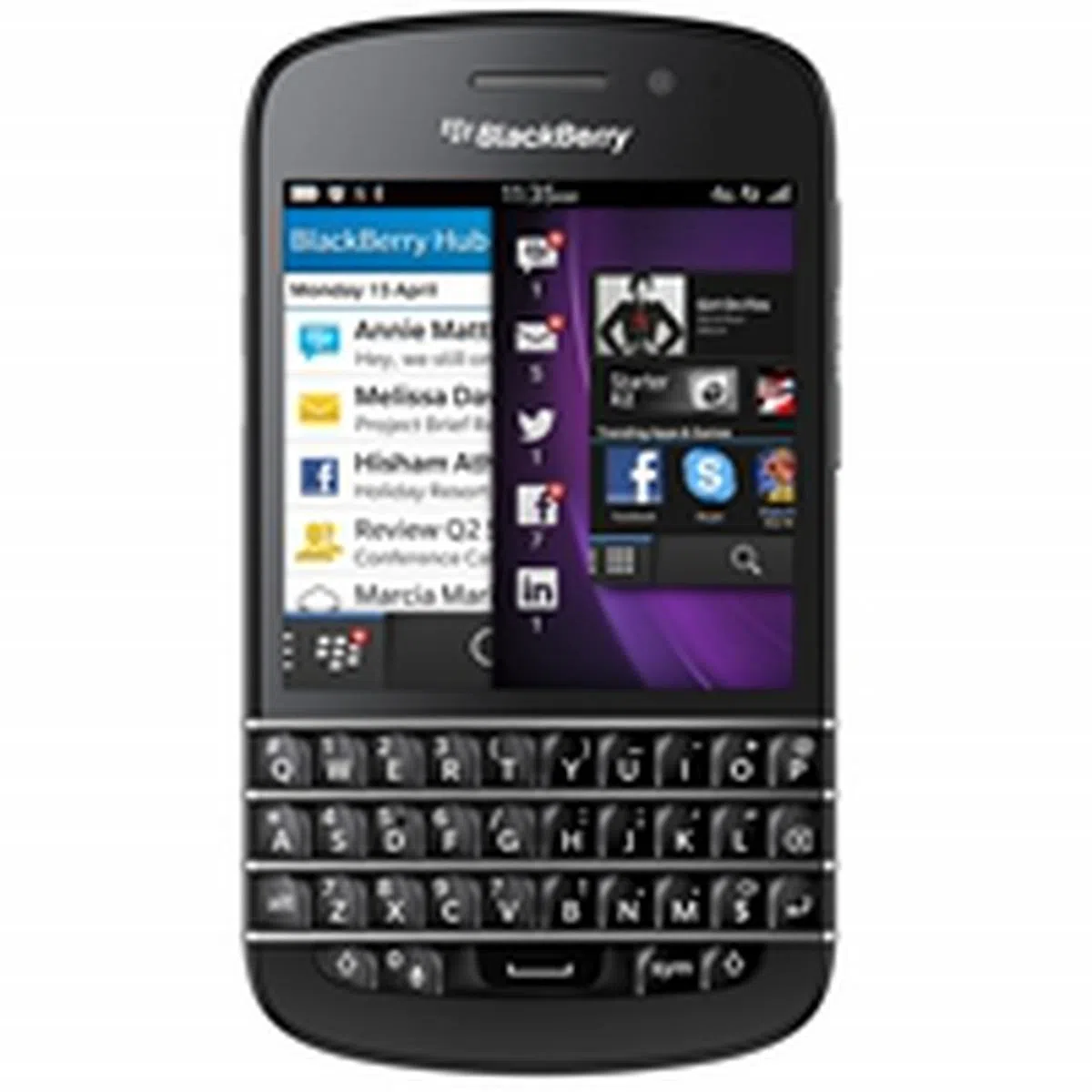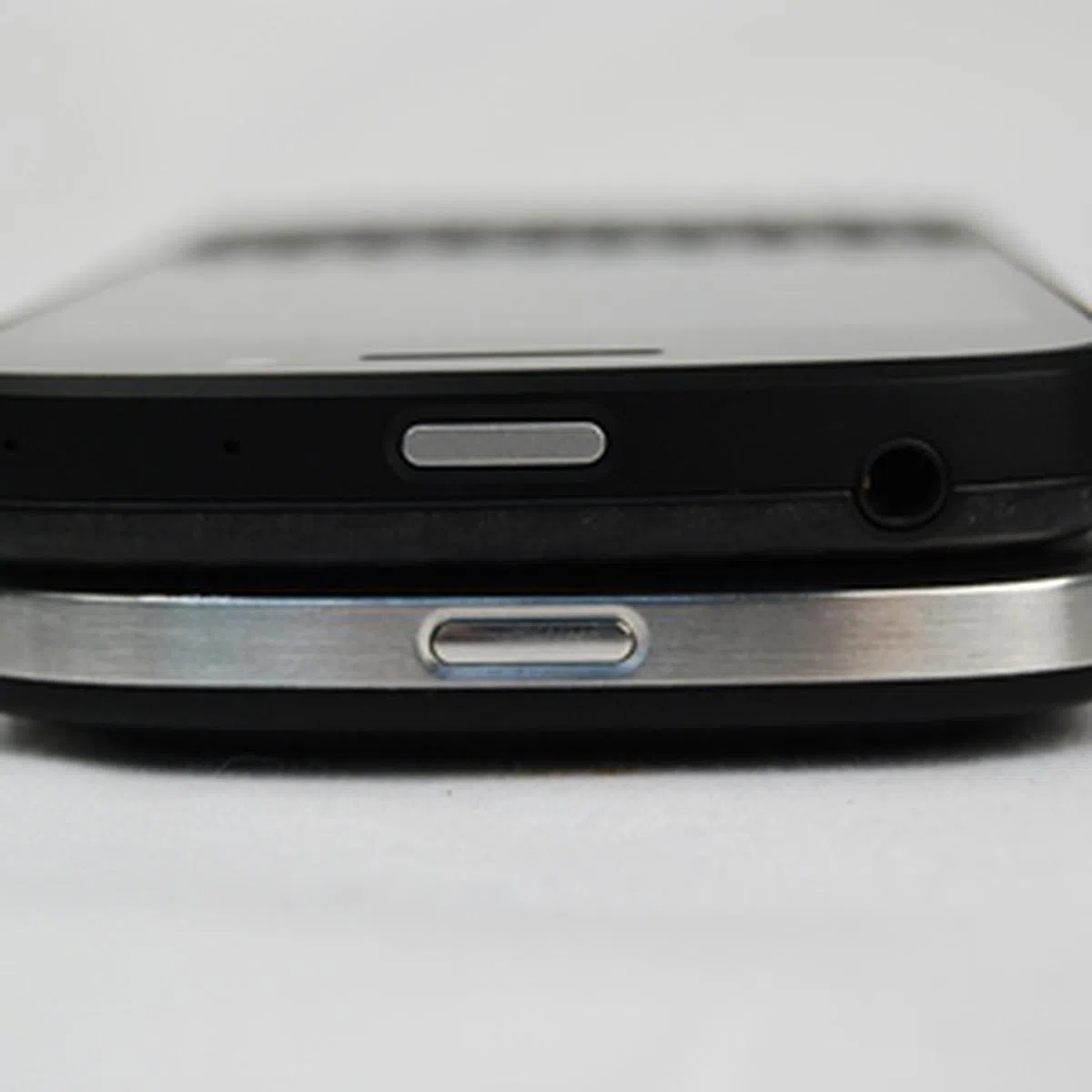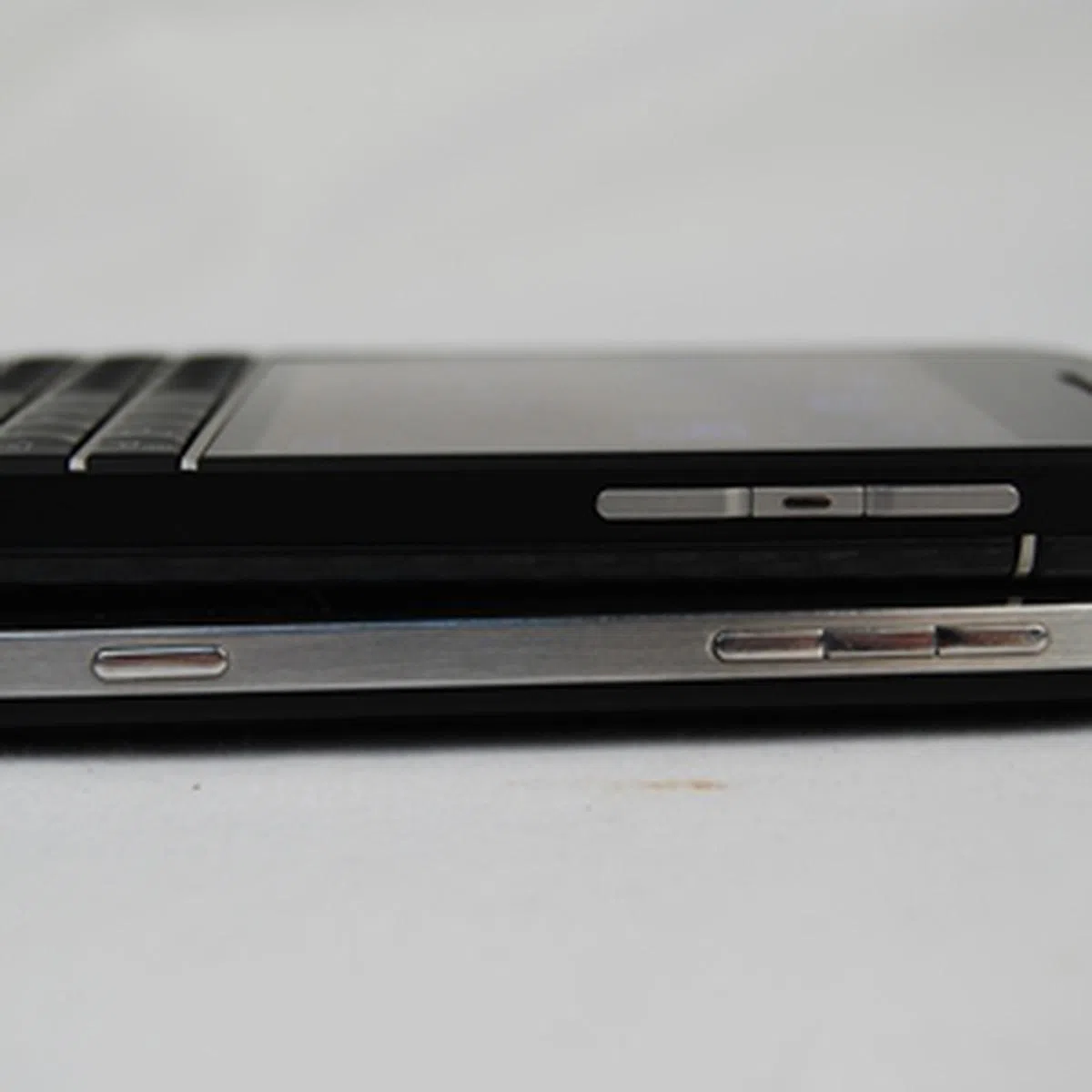BlackBerry Q10 - QWERTY Reborn (Updated)
BlackBerry returns to its roots with the Q10, the first BlackBerry 10 device to sport the classic QWERTY keyboard. Does the BlackBerry Q10 stand a chance in a market dominated by large touch screen smartphones? We take a quick look at it in detail.
By HardwareZone Team -
*Updated as of 29th May 2013 - Originally published as a preliminary review on 23rd May, we've since completed all our tests and updated the article to a full review, complete with ratings. For those who've read our article previously, you can jump direct to our Performance and Conclusion page.
Overview
Nearly four months after its announcement, the BlackBerry Q10 has finally arrived. BlackBerry's decision to continue making QWERTY phones remains questionable in the touch screen era, where phone vendors currently compete to see who can come up with larger, higher resolution displays. Where does the Q10 stand? Why is there a need for the Q10? Well, let's find out in this review. Before you go on, here's a quick overview of the key specs: -
 | Key highlights of the BlackBerry Q10
|
Design
BlackBerry does't break the mould when it comes to designing the Q10. It adorns the signature BlackBerry form factor that everyone is familiar with - a candybar design with a physical QWERTY keyboard situated below the display.

The BlackBerry Q10 has a striking resemblance to the Bold 9900, which was unveiled in 2011.
The most obvious comparison is with the BlackBerry Bold 9900, which we reviewed in August 2011 and deemed it as a gallant warrior sent to stem the company's declining market share and buy time for developing BlackBerry 10 (BB 10). Face-front, both devices seem to share similar design traits, although BlackBerry had to update the design of the Q10 to keep up with times.
For example, the Q10 sports a slightly larger display at 3.1-inch which by today's standards, is inadequate for any heavy multimedia usage. For Bold 9900 users, the bigger screen is considered a major step up and is likely to suffice for messaging and reading emails.
As BB 10 is a touch optimized user interface, BlackBerry has to do away with the row of physical buttons (dial, menu, optical trackpad, back and end call). The end result is a thin bezel separating the display from the keyboard.
Speaking of the keyboard, BlackBerry re-engineered the design to make it better for consumers who cannot live without physical keyboards. Unlike previous Bold models with slightly curved kyeboards, the Q10 has straight rows of keys separated by distinct ridges. It may initially seem or feel awkward, but our fingers adapted to the new layout within minutes of using the Q10 and long time Bold users should have no problems adjusting too.

As with previous Bold models, the Q10 also has a removable battery. To remove the back cover, place one or two thumbs on the cover and push it down. There is no groove to assist you in this, hence a little strength is required. Thankfully, the back cover is made up of a matte carbon fiber material that will not cause your fingers to slip easily.

Overall, the chassis of the Q10 is predominantly plastic and the soft touch finish on the rear also provides some grip. In terms of appearances, the Q10 isn't better than the Bold 9900 and in fact, loses the premium aesthetics afforded by the brushed stainless steel frame on the latter. Nonetheless, the Q10 still feels good in the hands. Here are some photos below to illustrate:-

The BlackBerry Q10 (top) doesn't look as premium as the BlackBerry Bold 9900 (bottom) as it does away with the stainless steel frame. More angles as seen below.
 |  |
Features
The Q10 runs on BB 10.1 out of the box. The update will be available soon for Z10 users and it will be rolled out through carrier partners over the coming weeks. For a list of the new features, do check out our article here.
New features aside, navigating the user interface remains the same on the Q10 as it is on the Z10 except that with the QWERTY keyboard, BlackBerry has enabled the keyboard shortcuts and "actions" to the universal search.
Keyboard Shortcuts
Long time BlackBerry users will be familiar with the classic keyboard shortcuts. Although some have been removed, there are still over 200 keyboard shortcuts available on BB 10.
- Pressing the letter "T" or "B" in the web browser, email, BlackBerry Messenger (BBM) chat or SMS will jump to the top or bottom of the page.
- Pressing the letter "C" will prompt you to create something depending on the app you are in. For example, pressing "C" in the email folder will compose a new email. Similarly, the same action will create a new event if you are in the Calendar app.
- Pressing the letter "I" or "O" while viewing a picture in BBM will zoom in or out.
Actions
The addition of "actions" to the universal search function on BB 10.1 allows you to carry out specific actions by simply typing into the search box. At time of publication, there are 7 apps or features that support the action function. They are BBM, email, call, text, Facebook, Twitter and LinkedIn.

You can post a status update or tweet by simply typing "facebook" or "tweet".
Actions make practical sense for a device like the Q10 as it has a smaller screen real estate and it puts the QWERTY keyboard to full use. The only issue that we foresee is the sheer number of shortcuts that one has to remember, especially for first time BlackBerry users. The full list of BlackBerry Q10 keyboard shortcuts can be found here.
Performance
Like its full touch screen counterpart Z10, the Q10 is powered by Qualcomm Snapdragon S4 dual-core 1.5GHz processor and 2GB RAM. Navigating the user interface is a breeze. The overall user experience is almost similar to the Z10, and as we commented before, we had higher expectations for the BB 10 as it is a latecomer to the mobile scene.
Due to the screen size constraints, gesture-based navigation wasn't as smooth. For example, your finger will inevitably touch the keyboard when you swipe up from the bottom of the screen to switch between apps since the bezel between the display and keyboard is ultra thin. It does get somewhat annoying every time your finger brushes the top edge of the keyboard.
Multimedia Performance
BlackBerry switches from using LCD to Super AMOLED on the Q10, theefore colors tend to look brighter and more vibrant. As the screen size is smaller, the pixel density is quite high at 330ppi. The 1:1 aspect ratio of the display means that typical widescreen videos will look small on the Q10, which reiterated our point earlier that the Q10 is not well suited for multimedia viewing. This is worse than the LG Optimus Vu whose screen uses a 4:3 aspect ratio.

How a typical video playback will look on the BlackBerry Q10.
In terms of storage capacity, the Q10 comes with 16GB internal storage memory and a microSD card slot which can be accessed by removing the rear battery cover of the device, which supports memory cards with capacities up to 32GB in size.
Moving on to touch upon the imaging capabilities, the Q10 is equipped with an 8-megapixel rear autofocus camera which is capable of 1080p HD video recording, and a 2-megapixel front-facing camera that is capable of 720p video recording. The Time Shift mode seen on the Z10 is also present in the Q10. As the Q10 comes with BB 10.1, it has support for High Dynamic Range (HDR) which enables the rear camera to capture multiple photos at different exposure levels and layers them automatically to produce a single photo that combines the best of the dark and light areas.

As the Q10 has the same camera components as the Z10, the image quality came up to be similarly satisfying with good details, low levels of noise and is nicely saturated.
*Updated as of 29th May 2013 - The following sections for battery mileage and conclusion were added after our battery tests were completed.
Battery Mileage
Using the same 480 x 800-pixel resolution video that we use across all our mobile device battery tests, we set the same test parameters which includes having the video looped under the following conditions:
- Brightness and volume at 100%
- Wi-Fi and Bluetooth connectivity turned on
- Constant data streaming through email and Twitter
Specifications/Device | BlackBerry Q10 | BlackBerry Z10 | BlackBerry Bold 9900 |
Processor |
|
|
|
Display Size |
|
|
|
Display Type |
|
|
|
Display Resolution |
|
|
|
Dimensions |
|
|
|
Weight |
|
|
|
Battery |
|
|
|



Battery performance has never been an issue for BlackBerry flagship devices and the Q10 is no different. It clocked an impressive mileage of nearly 12 hours. However, it's also not surprising why it's able to sustain such a long battery up-time - the Q10 has the biggest battery capacity among all the BlackBerry smartphones, and the small power-efficient Super AMOLED display also helps its cause. Based on the Power Consumption chart, this is indeed true as the Q10 registered a lower 0.67W power draw compared to the Z10 (0.84W) and Bold 9900 (0.69W). Therefore, it is not surprising that the Q10 tops the Portability Index where each device is assessed on its ability to balance battery mileage with its size and weight. For more comparisons with other mid-sized phones, check out the performance page in our BlackBerry Z10 review.
Under normal usage conditions, we found the battery performance of the Q10 to be within expectations. With 4G LTE connectivity turned on, frequent web browsing, making some calls and texting, the Q10 could last through a typical day at work. If the battery runs flat, you have the option to swap the battery. Having said that, booting up or powering off the phone requires you to exercise some patience.
Booting up the Q10 takes about one minute and five seconds while shutting the phone down will cost you about 30 seconds. In comparison, the Apple iPhone 5 takes half the time to shut down and 20 seconds to power up. In yet another comparison, it took us close to 9 seconds to shut down the LG Nexus 4 and about 31 seconds to start up.
Conclusion
The BlackBerry Q10 has all the ingredients that makes a great QWERTY device, but it now faces the question of relevancy.
Its 3.1-inch Super AMOLED display (1:1 aspect ratio) may be too small for multimedia usage, but the size should suffice consumers who use the Q10 for what it is - a great communication device to stay connected. The QWERTY keyboard is indeed one of the best features of the Q10, making keyboard enthusiasts feel at home within minutes of using the device. We reckon many existing BlackBerry users would find themselves right at home with this new device.
The great overall package of the Q10 is only crippled by the ecosystem of apps and services in BB 10. Besides the limited (but growing) native app ecosystem, the Q10 sticks out like a sore thumb in a market flooded with touch screen devices. For both the points, timeliness seems to be the core issue with BlackBerry; there's no denying that the Q10 was late to the game. Consider this - there hasn't been any new credible QWERTY phone for a long while now and the advancement in touchscreen technology, software keyboard design, text prediction and correction have more than made up for the lack of devices with a physical QWERTY keypad in the last two years. As much as some hardcore users believe a combination device with a hidden full QWERTY keyboard design (the BlackBerry Torch 9800 comes to mind) will be able to tackle all the scenarios neatly, the reality is most people are pampered by the new-age minimalist phone designs with thin profiles and pocket-friendly weight. A device with a large touchscreen and a hidden full QWERTY keyboard have difficulties adhering to these expectations and so this is fast becoming a bygone era (though we won't rule them out all together yet). Having said that, its Z10 touch screen counterpart sports an impressive software keyboard that enables you to compose messages swiftly if you're looking for a more 'modern' BlackBerry companion.
One other quirk we noticed is that while the BlackBerry 10 OS was designed with touchscreen usability in mind, we find that the presence of the physical keyboard on the Q10 and its small screen somewhat a hindrance while trying to use the phone swiftly with its touch gestures. Comparatively, usability is much more seamless on the touchscreen-only Z10. This could also be signs that such hybrid designs are not really ideal in the modern day, unless you're a heavy user of text messengers and emailing on the move. Even so, don't forget the steep uptake of tablet devices that co-exist with smartphones, thus offsetting the need for you to rely only on your phone for composing long text messages and mails.
At the end of the day, it all boils down to what you intend to do with your mobile device (or devices) and your usage scenarios. Priced at S$898, the BlackBerry Q10 comes across as overpriced for its capabilities. There is no shortage of alternatives and better deals (both in price, capabilities and app support) out there such as the S$868 Sony Xperia ZL, S$798 LG Optimus G and the S$668 LG Nexus 4. As the only QWERTY smartphone to be announced in recent memory, the odds are stacked against the BlackBerry Q10. It will have no problems convincing die hard fans of QWERTY keyboards, but it faces an uphill task in appealing to consumers who are shopping for a smartphone with bigger display and better app selection.
Our articles may contain affiliate links. If you buy through these links, we may earn a small commission.

